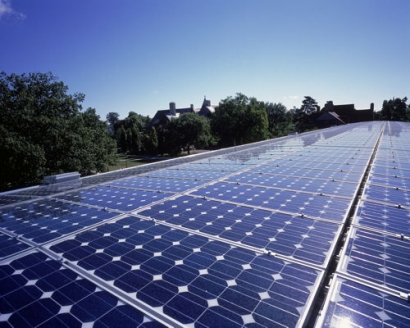
But, you’ll need to do a little calculating before you can enjoy the many benefits of having solar panels on your home. Here are four steps to help you calculate the number of solar panels you’ll need.
1. See How Much Electricity You Use Now
The first thing to do is to calculate how much energy you’re currently using. Chances are, your house uses more electricity during some months over others. By taking a yearly estimate, you’ll have a clear idea of your home’s long-term energy usage. You might also consider having an electrician with training from an electrical school help with this step.
To get these numbers, you’ll need to have your electricity bill handy. If you can’t find or don’t receive monthly paper bills, your electric company’s website should have this information available online. However, you might need to create an account with your electricity provider to obtain this information.
When you have access to your monthly bill, look for a section that lists your monthly kWh (kilowatt-hours) usage. These numbers are often towards the bottom of your electricity bill. Add your monthly kilowatt-hours, and you have your annual energy usage. If you want to calculate your daily average energy use, take your annual total and divide it by 365 (days per year).After learning how much electricity your household uses, keep these numbers set aside.
2. Check the Orientation and Pitch of Your Roof
It’s now time to learn about your roof’s orientation and pitch. Getting this data is important because it helps determine how much sun your roof receives each day.
Generally speaking, you’ll get the most energy from solar panels installed on south-facing roofs. In some cases, solar panels facing the south provide up to 20% more electricity than those facing other directions. However, this type of installation isn’t always an option. Don’t worry; you can still get plenty of energy on solar panels that don't face towards the south.
You’ll also want to calculate your roof’s pitch. Instead of risking injury by getting on top of your home, there’s an easier way to calculate the pitch of your roof. Before you start taking measurements, you’ll need measuring tape, a piece of chalk, and a level (18 to 24-inch levels work best). Next, follow these steps:
Climb up to the side of your home.
With measuring tape or a ruler, horizontally measure 12 inches out from where your roof meets your property. Make a mark to note this measurement.
Starting from where you made the mark in step #2, take a vertical measurement of your roof. This will give you your roof’s rise.
Here’s how to piece all of these steps together. If your roof had a base measurement of 12 inches and your second measured mark was at seven inches in height, you would have a roof slope of 7:12.
If you can’t or don’t want to get on a ladder, it might be best to have a professional get these measurements. There are also a few popular roof pitch calculator apps that might be helpful, including Pitch Gauge or Roof Pitch Factor.
3. Find Out How Much Sunlight You Receive
Another important factor to figure out how many solar panels you need is how much sunlight your home receives. Fortunately, you don’t have to worry about getting back on your roof or solving complicated equations.
Instead of making your own calculations, there’s a simpler way to determine how much sunlight your roof receives. Google recently launched a tool called Project Sunroof. With this tool, you enter your address and, within a matter of moments, you’ll see how much sun your roof receives per year.
Project Sunroof uses data from Google Maps to create a visual representation of where the sun’s rays hit your roof. With this tool, you’ll also find out how much money you’ll save by having solar panels.
4. Pick a Solar Panel Efficiency Rating That Works for You
It’s now time to think about what kinds of solar panels you’ll need. You can make this determination by looking closer at solar panel efficiency ratings. These ratings detail how efficiently solar panels convert energy into usable electricity. The average home solar panel typically features efficiency ratings ranging from 14 to 20%.
If your home doesn’t use a lot of electricity, and you want something as inexpensive as possible, solar panels with 14% efficiency might be perfect for your home. With that said, it’s best to have a solar panel installation professional help you make an optimal efficiency determination.
Calculating the number of solar panels you need does take some time and effort. However, getting to save money while helping the environment makes buying solar panels an extremely wise investment.

